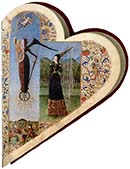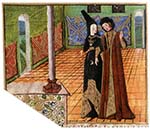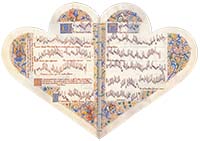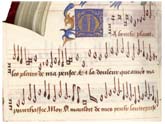Chansonnier de Jean de Montchenu
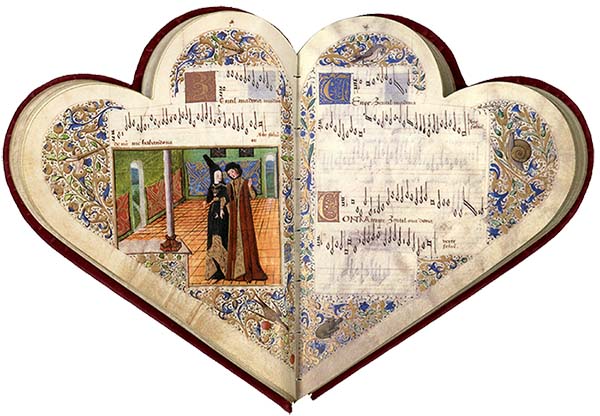
This beautiful, heart-shaped codex was compiled around 1470 for a nobleman named Jean de Montchenu. It contains forty-four polyphonic chansons (thirty in French and fourteen in Italian), written by such notable composers as Guillaume Dufay, Johannes Ockeghem, and Antoine Busnois. True to the chansonnier’s design (the codex opens into the shape of two hearts joined as one), the subject of these chansons is courtly love. The pages are detailed with illuminated miniatures, gold-flecked initials, and fantastical flora and fauna. The chansonnier made its way from the hands of Jean de Montchenu in the 15th century to the Bibliothèque Nationale de France in 1933. This meticulously reproduced facsimile, one of a limited edition of 1380 copies, brings this musical and historical treasure from France to our collection.
For more information about the Chansonnier de Jean de Montchenu, visit the publisher's website: Vicent García Editores.
(Click on each image to enlarge. Image will open in a new window.)

